Bali’s Ogoh-Ogoh Parade is a stunning display of Balinese creativity and culture rolled into one. As a ‘Pre-Nyepi’ festivity, these giant demonic effigies are ceremoniously carried and displayed during the Ngrupuk Parade.
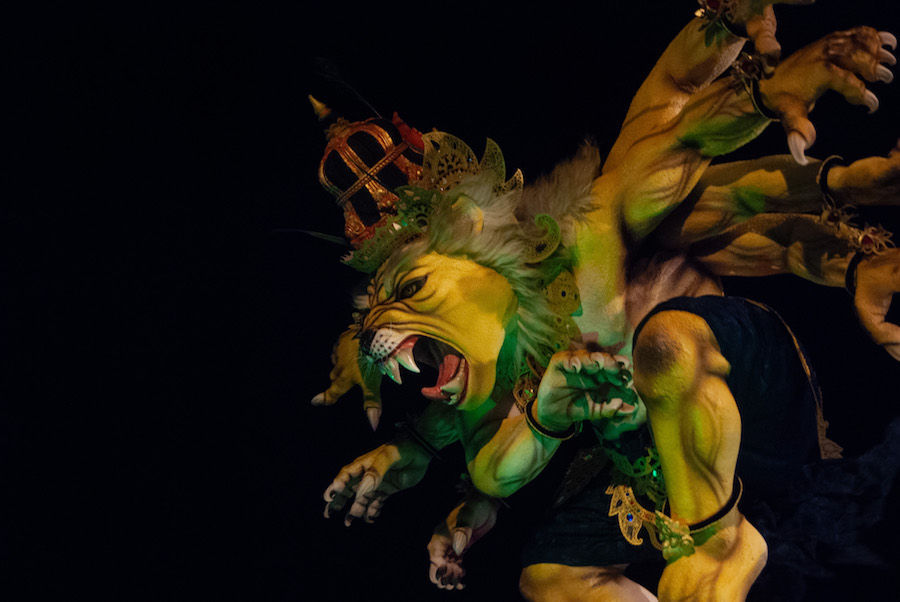
Let’s start with Nyepi. Catur Brata Penyepian, otherwise known as Nyepi, marks the first day of the new Çaka Calendar year. The Çaka calendar follows the lunar-solar cycle, which primarily rules agricultural ritual life. It comprises twelve months, or sasih, of 28 to 30 days, amounting to 354 to 355 days a year.
Nyepi is Bali’s ‘Day of Silence’, where the Balinese Hindu exercise a full 24 hours of no light, no work, no pleasure, no sound. From 6am to 6am it is a day of reflection, meditation and restraint. It is quite a contrast to the eve of Nyepi, where the Ogoh-Ogoh are out on display with music, fire, revelry at full force.
What are Ogoh-Ogoh?
Ogoh-Ogoh take the form of demons, witches and ghosts — inspired by the bhuta kala (or lesser demonic forces), as well as the leyak black magic witches and other haunting local folklore. Thus, they are often frightening and grotesque, though sometimes humorous.
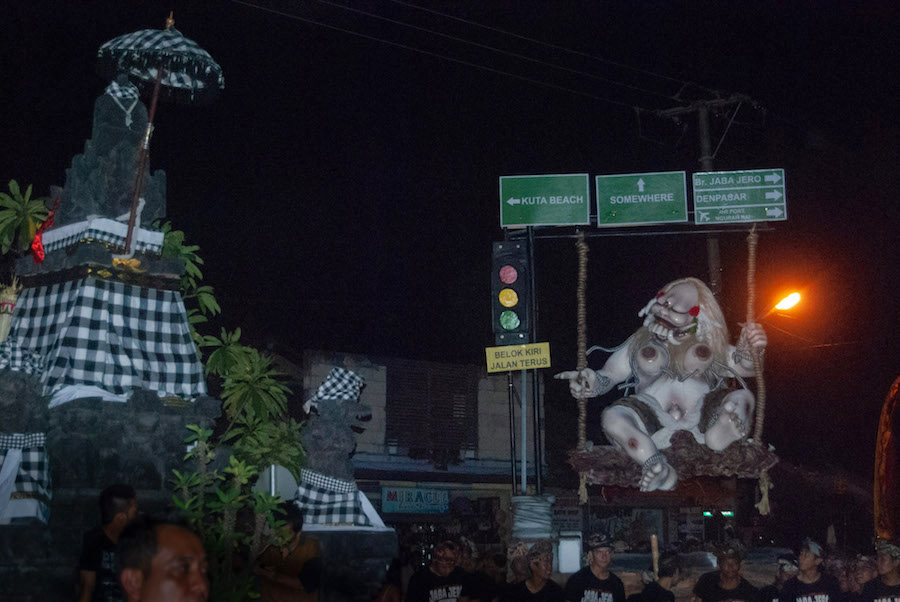
The purpose of the ogoh-ogoh statues are to clear and purify the streets of evil and negative forces; said to accumulate at main crossroads of villages. This was done in a folk-based ritual called Ngerupuk (a kind of exorcism), which previously only involved noise and torches. Around the 80’s, this evolved, and the the tradition of making and displaying these ogoh-ogoh was introduced.
The making of these effigies – ranging from 2m in height to a whopping 12m – are planned months in advanced. They are often created by the youth of the Banjar village community, becoming a sort of community activity.
Traditionally, they were made from bamboo, palm fibres, paper and fabric. The Balinese Hindu are no strangers to creating such intricate sculptures, as the bade cremation tower or animal sarcophagus are fashioned in a similar way. A frame is assembled, then it’s overlain by papier maché and fabrics, then intricately painted. Recently, more modern iterations have included smoke machines, rotating discs and speakers to bring these demons to life. They are true works of art.
For some time, the Balinese began using styrofoam/polystyrene blocks to make their wonderful figures. Their mastery in carving made easy work of malleable material, painting it was simple and its light weight meant the statue was easy to carry for the parade.
Then, in 2014, a campaign started by art-activist Marmar Herayukti called for the banning of styrofoam in the making of Ogoh-Ogoh, asking creators to return to using natural materials, protecting Bali’s environment. In 2019, the Balinese government banned the use of all styrofoam to make Ogoh-Ogoh, in a stance to make the parade more environmentally friendly.
After months of cooperation, creativity and late nights, the eve of Nyepi beckons these demons out of their village caves. Each Banjar reveals their creation on a designated street for the world to see.
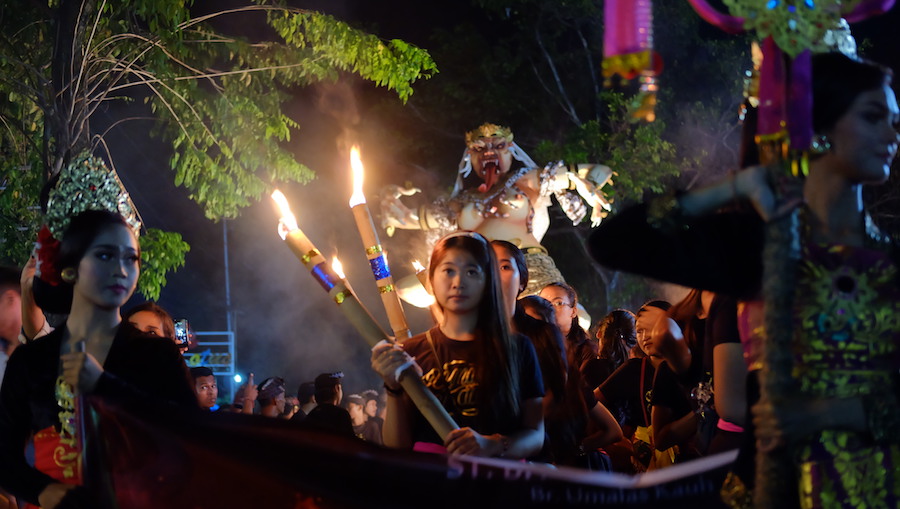
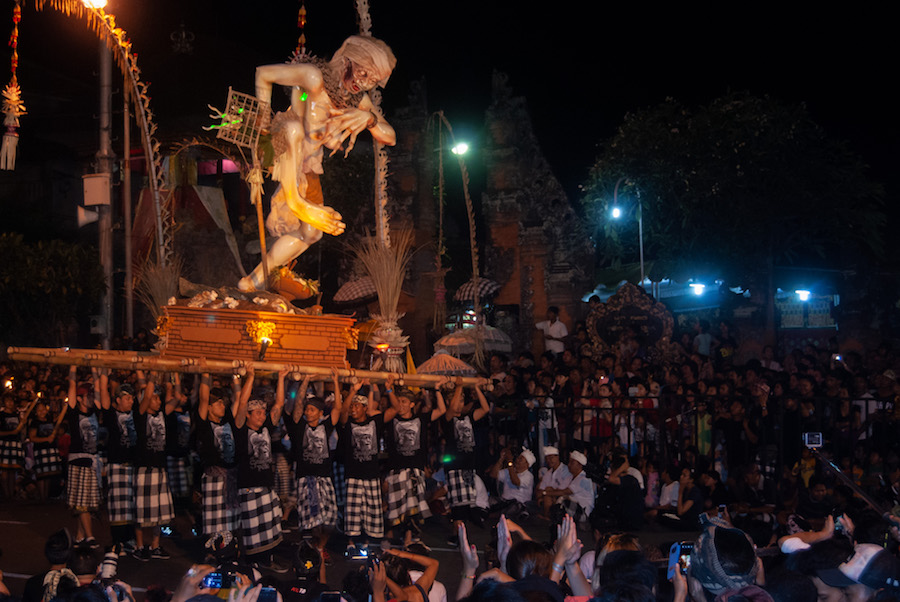
Then the Ngrupuk parade begins. One-by-one, the banjars literally carry their ogoh-ogoh – supported by rafts of bamboo – in a parade of gamelan, dancers and torches, to the crossroads.
Here a performance takes place and this towering demons are swivelled anti-clockwise and shaken to the tunes of song and story. It’s name is derived from ogah-ogah, meaning to shake in Balinese, as its shaking is said to scare off the evil spirits.
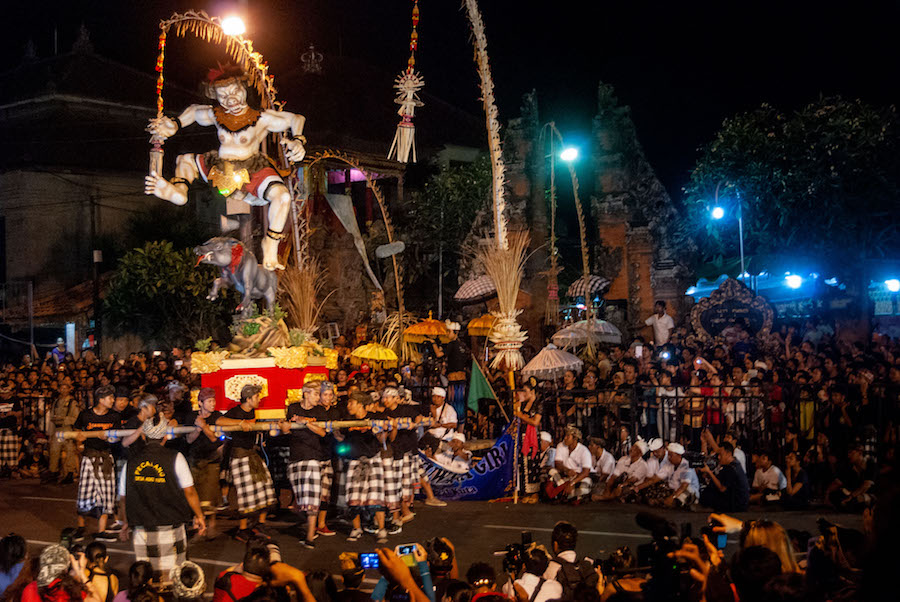
Traditionally, the figures were brought to the Pura Dalem, or sometimes to the sea, and burned completely. A symbol of purification. The burning of the demons, those external to us and those internally too, as the bhuta kala are also symbolic of our inner demons.
With the streets cleared and exorcised through the ngrupuk parade, the next day, during Nyepi, any returning evil forces will believe that Bali has been abandoned, as no one can be heard or seen throughout the island. Thus, these demonic forces leave, allowing for a clean start to the new Saka New Year.
Where to see the Ogoh-Ogoh?
Currently, during the Covid-19 Pandemic, the ogoh-ogoh parades are not being permitted.
The most impressive Ogoh-Ogohs are (normally) paraded at the Puputan Square in Denpasar. Here, the Ogoh-Ogohs are not only great in artistic shape and size, but are also complete with colorful lighting and some are even motorized to create more dramatic effects. A troop of Balinese dances accompanied by live traditional music usually trails behind the float as a story teller narrates the tales of the demon on a microphone. Both tourists to Bali and residents enjoy these spectacular shows.
Read more about the Melasti Ceremony before the Ogoh-Ogoh Parade, or read about Nyepi and the Çaka Calendar.








